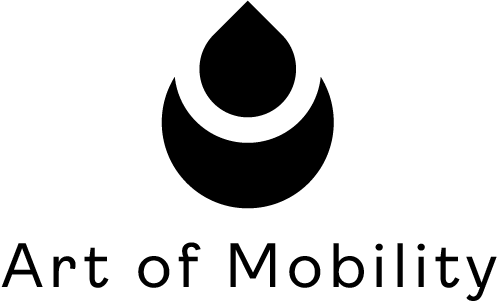
Temporomandibular joint disorder (TMJ or TMD) is a common condition that can affect people of all ages, and make performing even simple daily activities a hassle. In this guide, we will explore what this condition is, how chiropractic care can provide relief for TMJ, and activities to avoid if you’re experiencing jaw pain.
What is TMJ?
TMJ stands for temporomandibular joint, which is the joint that connects your jaw to your skull, right in front of your ear. This joint helps you open and close your mouth, chew, talk, and swallow. Sometimes, this joint can have problems, leading to what’s known as temporomandibular joint disorder. When this happens, you might feel pain in your jaw, hear clicking or popping sounds, or have trouble moving your jaw.
There are several potential causes of TMJ disorders, including:
- Jaw Injury: Trauma to the jaw or head can damage the temporomandibular joint, leading to TMJ disorders.
- Arthritis: Both osteoarthritis and rheumatoid arthritis can affect the TMJ, causing pain and limited movement.
- Teeth Grinding and Clenching: Chronic teeth grinding (bruxism) and clenching can put excessive pressure on the TMJ, leading to pain and dysfunction.
- Misalignment: Misalignment of the teeth or jaw can create an uneven bite, putting strain on the TMJ.
- Poor Posture: Poor posture, particularly in the neck and shoulders, can affect the alignment and function of the TMJ.
- Connective Tissue Diseases: Certain diseases that affect connective tissues, such as Ehlers-Danlos syndrome, can impact the TMJ.
Underlying problems with your neck can also cause or worsen TMJ issues. Your neck and jaw are connected through muscles, nerves, and bones. If there is an issue with your neck, it can create tension and imbalances that affect your jaw. Fixing these issues can often help relieve TMJ symptoms.
The Role of Chiropractic Care in Treating TMJ
Chiropractors can help with TMJ problems. They use specific techniques to improve the function of your spine and jaw, which can reduce pressure on the TMJ. This can help decrease pain, improve how your jaw works, and reduce symptoms. Chiropractic care for TMJ may also include:
- Spinal Manipulation: Applying controlled force to the spine to correct spinal function, reducing nerve interference and improving communication between the nervous system and the body.
- Soft Tissue Techniques: Using various techniques to address muscle tension around the jaw and neck.
- Exercise and Stretching Programs: Prescribing specific exercises to strengthen and relax the muscles around the jaw and neck, improving mobility and reducing tension.
How Long Does It Take to Fix TMJ With Chiropractic Care?
The time it takes to fix TMJ with chiropractic care varies. It depends on how severe your TMJ is and how your body responds to treatment. Some people feel better after a few sessions, while others might need several weeks or even months of regular treatment. Your chiropractor will create a treatment plan tailored to your needs and progress. Factors affecting the TMJ recovery times include:
- Severity of Symptoms: Mild cases may resolve quickly, while severe or chronic cases might require prolonged treatment.
- Underlying Causes: Conditions like arthritis, teeth grinding, or jaw misalignment can impact recovery time, as these underlying issues may need to be addressed alongside TMJ treatment.
- Overall Health: Your general health, including factors like diet, exercise, and stress levels, can influence how quickly the body heals and responds to treatment.
- Compliance with Home Exercises: Following prescribed exercises and lifestyle adjustments at home can significantly speed up recovery by supporting the chiropractic care received during sessions.
- Duration of Symptoms: If TMJ symptoms have been present for a long time before seeking treatment, it may take longer to see improvements.
- Lifestyle Factors: Habits like poor posture, stress levels, and daily activities that strain the jaw can affect recovery time and effectiveness of chiropractic care.
Where Is the Pressure Point for TMJ?
There are several pressure points that can help relieve TMJ pain:
- ST6: On your jaw muscle, about one finger width in front of your earlobe.
- SI19: In the depression right in front of your ear, where your jaw opens.
- GB2: Just below your ear, in the hollow area.
Gently pressing or massaging these points can help relax your muscles and reduce TMJ pain. However, before performing any massage or manipulation on these pressure points, you must consult with a chiropractor to avoid potential harm.
Massage Therapy for TMJ: What to Know
Massage can be very helpful for TMJ. Here’s why:
- Muscle Relaxation: Massaging the muscles around your jaw, neck, and shoulders helps reduce tension.
- Better Blood Flow: Massage improves circulation, which can promote healing and reduce inflammation.
- Pain Relief: Techniques like trigger point therapy and myofascial release target tight spots in your muscles to relieve pain.
- Stress Reduction: Massage is great for reducing stress, which can help if stress is making your TMJ worse.
Types of massage that can help include:
- Trigger Point Therapy: Focuses on specific tight spots in your muscles.
- Myofascial Release: Works on the connective tissues to reduce tension.
- Swedish Massage: Uses smooth, flowing strokes to relax muscles and improve circulation.
Activities to Avoid with TMJ
To manage TMJ and avoid making it worse, here are some things to avoid:
- Hard or Chewy Foods: Foods like nuts, tough meats, chewy candies, and gum can increase jaw pain.
- Wide Jaw Movements: Avoid activities that make you open your mouth wide, like big yawns or biting into large sandwiches.
- Stress: Stress can lead to teeth grinding and jaw clenching. Try relaxation techniques like meditation, deep breathing, or yoga.
- Poor Posture: Good posture helps reduce strain on your neck and jaw, especially when working or using devices.
- Sleeping on Your Stomach: This can put pressure on your jaw and neck. Sleep on your back or side with good neck support.
Unlock Relief From Jaw Pain
Chiropractic care can play a significant role in alleviating TMJ pain by improving neck and spine health, reducing muscle tension, and promoting better jaw function. If you’re struggling with TMJ symptoms, seeking professional chiropractic care can make a substantial difference in your quality of life.
At Art of Mobility, our skilled chiropractors are dedicated to helping you find relief from TMJ discomfort. We offer personalized treatment plans tailored to your specific needs and progress. Don’t let TMJ control your daily activities. Schedule an appointment with our Mississauga team today and discover how chiropractic care can help you achieve lasting relief from TMJ pain.

Hi, my name is Colby Ng and I am a chiropractor and completed my Doctor of Chiropractic at the Canadian Memorial Chiropractic College. I also completed my Bachelor of Kinesiology from the University of Toronto.I have been in sports and athletics my whole life, which has pushed me to have big goa...
Recent Posts
